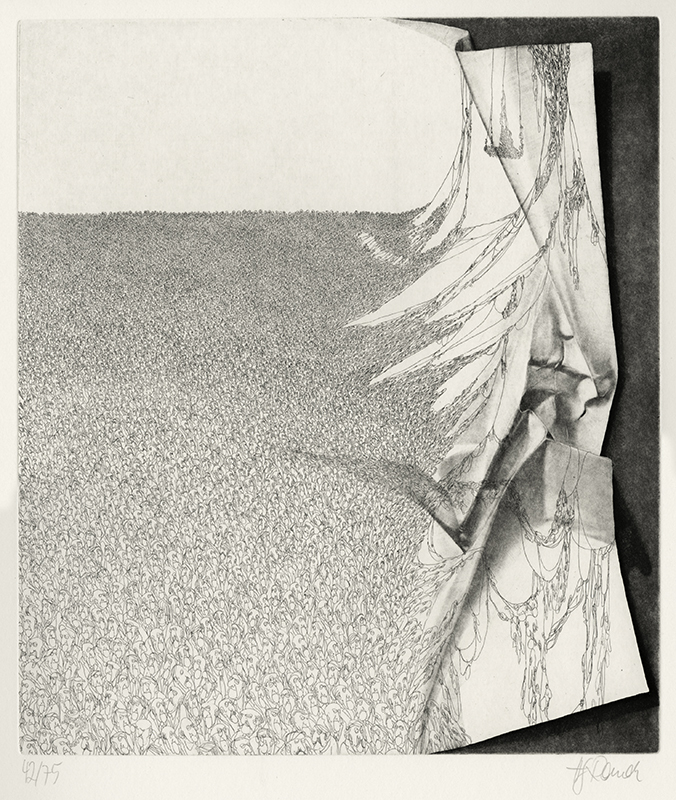
19th, 20th & 21st Century Fine Prints
707-546-7352 · fax 707-546-7924 · web: www.annexgalleries.com · email: artannex@aol.com
Fröhlich Apokalypse IV: - Unsere Basis (Happy Apocalypse - Our base) by Hans Georg Rauch

Fröhlich Apokalypse IV: - Unsere Basis (Happy Apocalypse - Our base)
Hans Georg Rauch
Fröhlich Apokalypse IV: - Unsere Basis (Happy Apocalypse - Our base)
Hans Georg Rauch
1939 - 1993 (biography)Hans George Rauch worked in painstaking detail throughout the entirety of his career, never deviating from imagery that commanded close inspection in order to understand the whole. Here, he has carefully wrought a sea of faces that extends beyond the horizon, each face complete with facial features and - as much as he could in such minute detail - individual expressions. Once the viewer has absorbed this element of the composition, the piece must then be viewed on the whole. The crowd appears to have come up against a cliff or wall, represented by Rauch’s rendering of crumpled paper.
Whether or not he intended to lend some kind of meaning to the piece, questions arise anyhow. Plate four from a suite of images titled The Happy Apocalypse, Rauch succeeds in composing a sense of doom softened by the presence of the collective, as if to say, we march together into the abyss.
Hans Georg Rauch was born in Berlin, Germany on 21 June 1939. Rejected by his unwed mother and her family, he was placed in a childrens home operated by the Nazi government. Hans Georg was liberated from hunger and neglect by his aunt who intervened on his behalf and took him to live in the home of his great-grandfather.
In 1964, Rauch traveled to France for a year of study and the following year he found work as an illustrator, eventually obtaining commissions from Der Spiegel, Stern, Look, The Observer, and The New York Times. In 1969, he married artist Ursula Vorhauer and published his first book of illustrations "Dessins à regarder de prés" (Editions Planete, Paris). In 1970, he awarded the Heinrich Zille Prize for sociocritical drawing, allowing him to travel to United States. Upon his return to Germany, his first major exhibition was mounted at the Wilhelm Busch Museum in Hanover in 1971. He began working in intaglio printmaking in 1974 and worked almost exclusively in the medium for several years.
In 1991, Rauch helped establish an initiative in Worpswede to support the politically persecuted, including a cafe which would host them. He continued to travel, work, and exhibit until his sudden death at his home in Worpswede, Germany on December 23, 1993.
